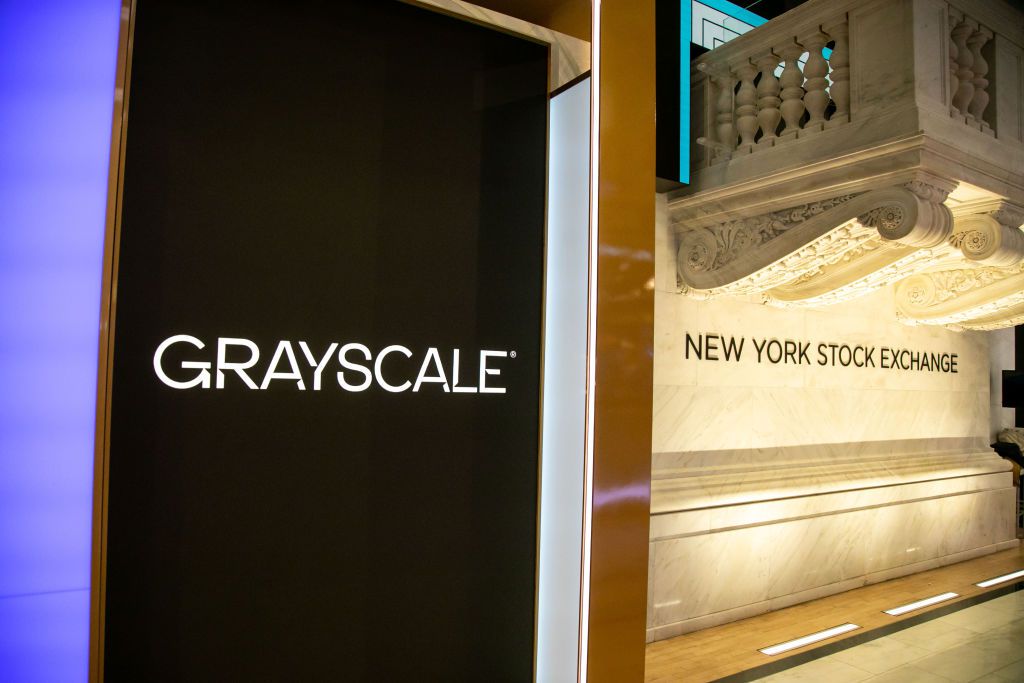Key Takeaways
- Spot bitcoin ETFs had their first day of trading in the U.S. on Thursday.
- While there are currently 10 different spot bitcoin ETFs on the market, Grayscale’s GBTC accounted for more than half of all of Thursday’s trading volume for these financial products.
- According to one analyst, GBTC’s current dominance may be due to investors selling that particular offering for one of the new alternatives.
- Despite the approval of spot bitcoin ETFs by the U.S. Securities and Exchange Commission (SEC), some major financial institutions are declining to offer these products to their clients.
On the first day of spot bitcoin exchange-traded fund (ETF) trading, Grayscale Bitcoin Trust (GBTC), which is a converted version of an already-existing financial product, dominated the competition. That said, there is reason to believe this could be a temporary phenomenon.
Grayscale Takes the Early Lead, But It May Not Last
There was more than $4.6 billion worth of trading volume in spot bitcoin ETFs on U.S. exchanges on Thursday, which was the first day the newly approved financial products were allowed to be traded.
Trading volume does not necessarily mean money flowing into these products. Why is that? More than half of the trading involved GBTC; however, this could be a temporary trend caused by GBTC holders selling their holdings in favor of alternative options, according to Bloomberg Intelligence analyst James Seyffart.
When GBTC is removed, spot bitcoin ETF offerings from Blackrock (BLK) and Fidelity are the other major players in terms of volume, with Blackrock’s iShares Bitcoin Trust (IBIT) seeing more than $1 billion in trading volume on the day. Fidelity’s Wise Origin Bitcoin fund (FBTC) saw greater than $700 million in volume.
When combined, the offerings from Grayscale, Blackrock, and Fidelity accounted for roughly 87% of the total spot bitcoin ETF trading volume today.
There are currently 10 different spot bitcoin ETF products approved for trading in the U.S. Hashdex’s Bitcoin ETF (DEFI) that received approval to convert from a bitcoin futures ETF to a spot product clarified Thursday that it didn’t hold a spot position yet. It will change its name and investment strategy at a later date.
In an interview with CNBC, Galaxy Investment Partners CEO Michael Novogratz shared his view that the battle for spot bitcoin ETF dominance will be between Blackrock, Fidelity, and Invesco, despite the early centralization of activity around GBTC.
Vanguard Stays on the Sidelines, UBS Approaches With Caution
While yesterday’s official regulatory approval of spot bitcoin ETFs by the SEC was viewed by many as a landmark moment for the crypto asset from both a regulatory and institutional perspective. Brokerage clients of Fidelity and Charles Schwab (SCHW) have access to the spot bitcoin ETFs but there are still some major financial firms that are limiting their customers’ access to this new product.
“While we continuously evaluate our brokerage offer and evaluate new product entries to the market, spot Bitcoin ETFs will not be available for purchase on the Vanguard platform,” said a Vanguard spokesperson in a statement. “We also have no plans to offer Vanguard Bitcoin ETFs or other crypto-related products. Our perspective is that these products do not align with our offer focused on asset classes such as equities, bonds, and cash, which Vanguard views as the building blocks of a well-balanced, long-term investment portfolio.”
Other firms took a more measured approach. A source close to UBS (UBS) said that the company is allowing its clients access to “more than half” but not all of the spot bitcoin ETFs available.
While it is unclear which ETFs are available to UBS customers, trades will be allowed only if certain conditions are met. Those include trades that are unsolicited (initiated by the client and not sought by the advisor), made from a brokerage account as opposed to an advisory account and in line with the client’s risk tolerance, among other factors.
This news is republished from another source. You can check the original article here







